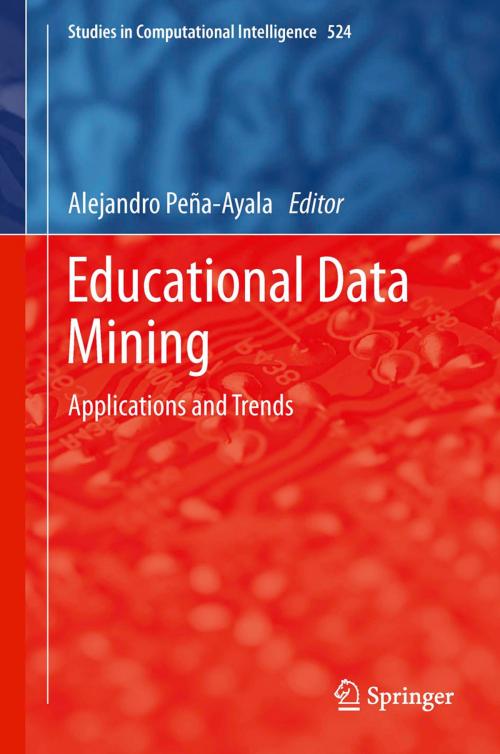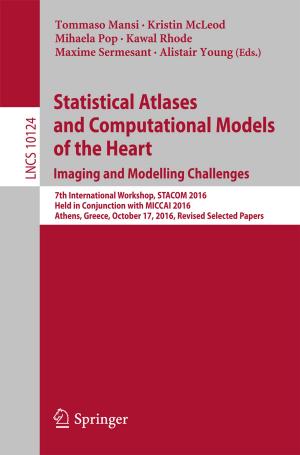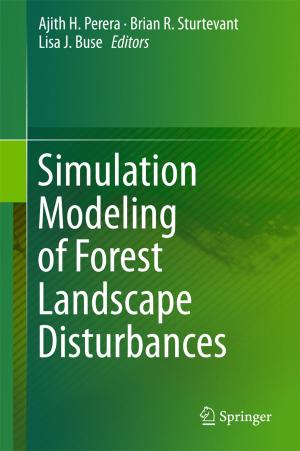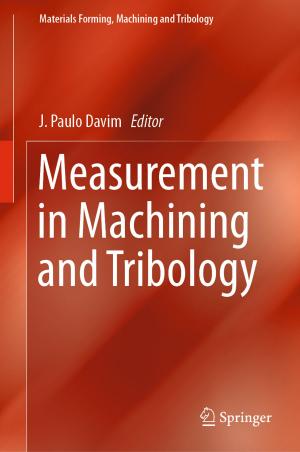Educational Data Mining
Applications and Trends
Nonfiction, Computers, Advanced Computing, Artificial Intelligence, General Computing| Author: | ISBN: | 9783319027388 | |
| Publisher: | Springer International Publishing | Publication: | November 8, 2013 |
| Imprint: | Springer | Language: | English |
| Author: | |
| ISBN: | 9783319027388 |
| Publisher: | Springer International Publishing |
| Publication: | November 8, 2013 |
| Imprint: | Springer |
| Language: | English |
This book is devoted to the Educational Data Mining arena. It highlights works that show relevant proposals, developments, and achievements that shape trends and inspire future research. After a rigorous revision process sixteen manuscripts were accepted and organized into four parts as follows:
· Profile: The first part embraces three chapters oriented to: 1) describe the nature of educational data mining (EDM); 2) describe how to pre-process raw data to facilitate data mining (DM); 3) explain how EDM supports government policies to enhance education.
· Student modeling: The second part contains five chapters concerned with: 4) explore the factors having an impact on the student's academic success; 5) detect student's personality and behaviors in an educational game; 6) predict students performance to adjust content and strategies; 7) identify students who will most benefit from tutor support; 8) hypothesize the student answer correctness based on eye metrics and mouse click.
· Assessment: The third part has four chapters related to: 9) analyze the coherence of student research proposals; 10) automatically generate tests based on competences; 11) recognize students activities and visualize these activities for being presented to teachers; 12) find the most dependent test items in students response data.
· Trends: The fourth part encompasses four chapters about how to: 13) mine text for assessing students productions and supporting teachers; 14) scan student comments by statistical and text mining techniques; 15) sketch a social network analysis (SNA) to discover student behavior profiles and depict models about their collaboration; 16) evaluate the structure of interactions between the students in social networks.
This volume will be a source of interest to researchers, practitioners, professors, and postgraduate students aimed at updating their knowledge and find targets for future work in the field of educational data mining.
This book is devoted to the Educational Data Mining arena. It highlights works that show relevant proposals, developments, and achievements that shape trends and inspire future research. After a rigorous revision process sixteen manuscripts were accepted and organized into four parts as follows:
· Profile: The first part embraces three chapters oriented to: 1) describe the nature of educational data mining (EDM); 2) describe how to pre-process raw data to facilitate data mining (DM); 3) explain how EDM supports government policies to enhance education.
· Student modeling: The second part contains five chapters concerned with: 4) explore the factors having an impact on the student's academic success; 5) detect student's personality and behaviors in an educational game; 6) predict students performance to adjust content and strategies; 7) identify students who will most benefit from tutor support; 8) hypothesize the student answer correctness based on eye metrics and mouse click.
· Assessment: The third part has four chapters related to: 9) analyze the coherence of student research proposals; 10) automatically generate tests based on competences; 11) recognize students activities and visualize these activities for being presented to teachers; 12) find the most dependent test items in students response data.
· Trends: The fourth part encompasses four chapters about how to: 13) mine text for assessing students productions and supporting teachers; 14) scan student comments by statistical and text mining techniques; 15) sketch a social network analysis (SNA) to discover student behavior profiles and depict models about their collaboration; 16) evaluate the structure of interactions between the students in social networks.
This volume will be a source of interest to researchers, practitioners, professors, and postgraduate students aimed at updating their knowledge and find targets for future work in the field of educational data mining.















